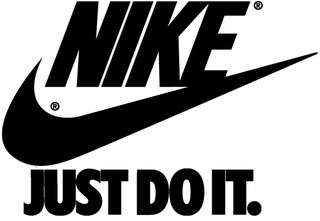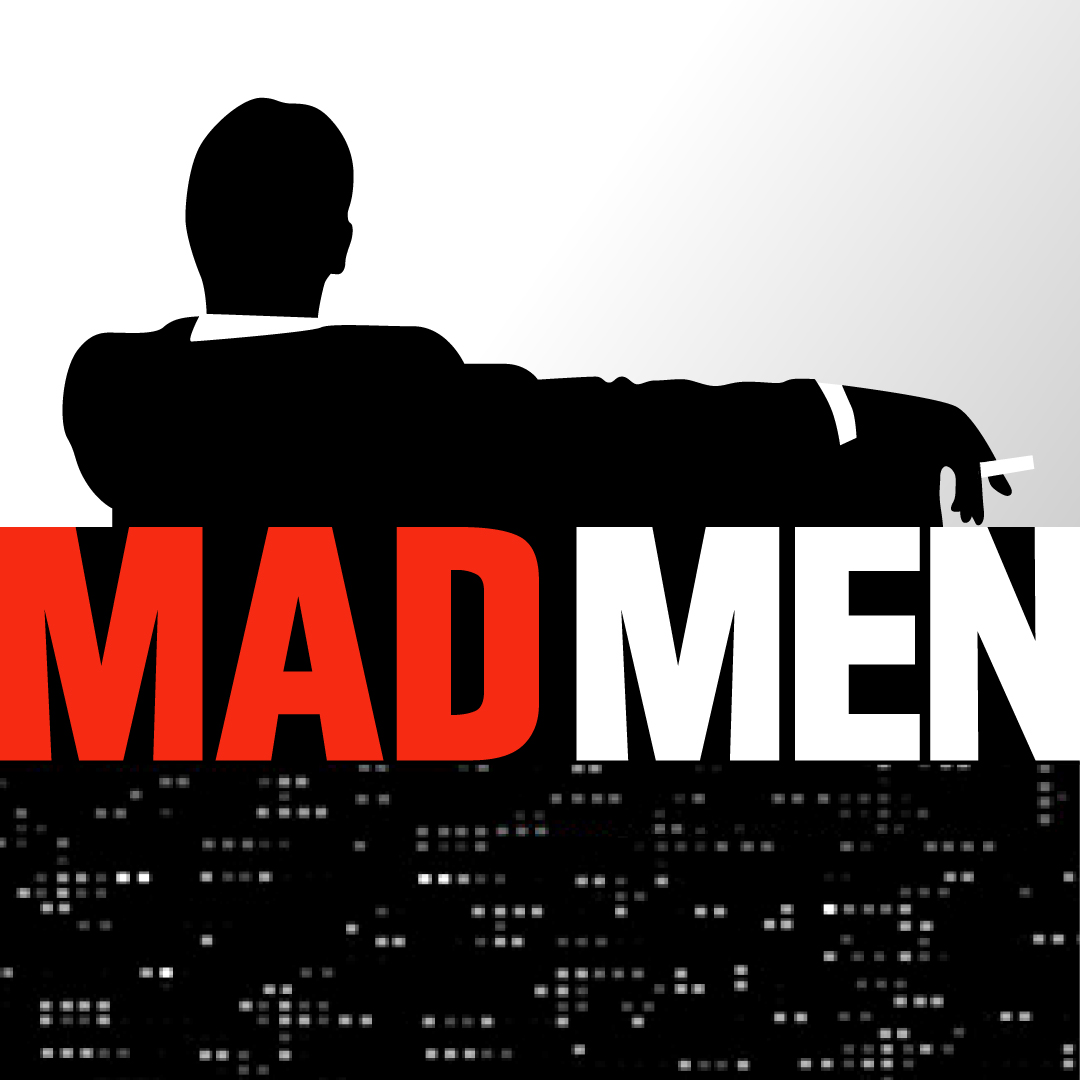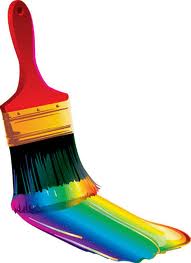 Oh, the wonder of beautifully crafted taglines. Those few strategically selected words that sum up everything your business stands for and what you want your target audience to know about you. They’ve made companies fortunes by telling people what makes them stand out in the sea of sameness. Consider FedEx’s brilliant “When it absolutely, positively has to be there overnight.” Nine simple words that tell FedEx buyers precisely what they’re going to get, while simultaneously informing all of its employees what their mission is. What if FedEx’s slogan was “We ship things!”? Would Nike be as successful if it allowed an executive committee to red-pencil “Just do it” into “When you need great shoes?” How would BMW’s vision change if “The Ultimate Driving Machine” became “Our cars are fun to drive!” My point is that these companies didn’t settle for weak platitudes or vague, generalized statements that could have applied to their competitors. Nope, they decided that they weren’t going to settle. Instead standing out and differentiating themselves was business-critical. Can the same be said for your company and its marketing? Do you have a themeline or slogan that makes you stand out? Is it unique and memorable? Or is it mediocre because somewhere down the line, people settled?
Oh, the wonder of beautifully crafted taglines. Those few strategically selected words that sum up everything your business stands for and what you want your target audience to know about you. They’ve made companies fortunes by telling people what makes them stand out in the sea of sameness. Consider FedEx’s brilliant “When it absolutely, positively has to be there overnight.” Nine simple words that tell FedEx buyers precisely what they’re going to get, while simultaneously informing all of its employees what their mission is. What if FedEx’s slogan was “We ship things!”? Would Nike be as successful if it allowed an executive committee to red-pencil “Just do it” into “When you need great shoes?” How would BMW’s vision change if “The Ultimate Driving Machine” became “Our cars are fun to drive!” My point is that these companies didn’t settle for weak platitudes or vague, generalized statements that could have applied to their competitors. Nope, they decided that they weren’t going to settle. Instead standing out and differentiating themselves was business-critical. Can the same be said for your company and its marketing? Do you have a themeline or slogan that makes you stand out? Is it unique and memorable? Or is it mediocre because somewhere down the line, people settled?
Imagine you owned a small piece of your buyers’ brains. And every time they thought about making a purchase where your product or service could be considered as an option, the brand or company name came to mind. For example if they were thirsty, they thought, “This Buds for you, “ or if they wanted a burger they thought, “Have it your way!” or if they when were tired and looking for a lodging for the night they remembered “We’ll leave the light on for ya!” That’s what the marketing slogans from Budweiser, Burger King and Motel 6 do, they help people remember a product and increase their propensity to buy. And that’s what a good marketing slogan can do for you. Unlike your company tagline or marketing message, your marketing slogan may change regularly or you may have more than one. For example American Express has: “Membership has its privileges.” And “ Don’t leave home without it.”
The taglines that work the hardest are not puns or rhymes, but ones that present many layers of meaning, where one layer can speak to the product while another speaks to value or even a brand a brand belief. It can manifest itself in any number of ways…online or offline. In ads and as a social media hashtag. On promotional products and product packaging. Most everywhere.
So what does a good tagline do? At its best, a good tagline conveys a singular value, loud and clear, on what a brand stands for. Remember, powerful words are powerful things. It also connects across all generations, geographies and markets, and becomes relevant for the consumer in his or her own personal way. And the right tagline doesn’t work for competitors because it’s only unique to your brand/company. Unfortunately, far, far, far too many taglines are generic and meaningless. In this time of technology disruption and increasing competition, clear positioning is valuable. Problems occur when the company and its messaging doesn’t have a focus, or the tagline could apply just as easily to other companies. In the marketplace, taglines are used to quickly communicate company differentiation. That said, taglines aren’t developed for customers alone. They’re also important for internal audiences as they can align an organization around a common cause and vision.
With that in mind, there are plenty of taglines out there that don’t work because they fail to connect. They’re easily overlooked, dismissed as “every day,” they lack originality or even mistaken for another brand. This usually happens when one of these mistakes happens:
Alternatively, good taglines have a number of hard-working qualities to them. They’re:
The process of developing a fresh, original and imaginative tagline is no easy task. From competitive research and brainstorming to paring down the list of options to more brainstorming, the process can take more time than you think …not to mention the back-and-forth given the stakeholders who are involved. And even then, the tagline may not be “all that.” That said, here’s how powerful a tagline can be – after 50+ years! Avis Rent-A-Car built its business with “We Try Harder” (which they finally put out to pasture just a few years ago). How the phrase came to be sounds like something out of Mad Men. The tagline was created in 1962 and actually came about in the response that Bill Bernbach, the co-founder of DDB, received from company management when asking why anyone ever rents a car from them. “We try harder” was the answer. Within a year, Avis turned a profit for the first time in over a decade and the rest is history.
####
Rolf Gutknecht is vice president, director of account services for LA ads. To discuss your thoughts with Rolf on this blog or any marketing matters, email via this link, or visit www.LAadsMarketing.com. You can also connect with Rolf on LinkedIn.
 I was having lunch with a friend who is well-respected and recognized in the advertising industry (age of “Mad Men”), when we both started reciting well-known marketing/advertising quotes and how there are as relevant today as they were 40 to 60 years ago. Unfortunately, too many marketing director types immediately dismiss these pearls of marketing wisdom because they think “that was then and this is now.” The problem with that type of thinking is that these people are doomed to make the same mistakes over and over again because they don’t get one important fact: marketing has the same challenges as it did years ago which, in short, is the need to differentiate your message from competitors so people buy your product or do business with you. It’s we just have a lot more channels to contend with today.
I was having lunch with a friend who is well-respected and recognized in the advertising industry (age of “Mad Men”), when we both started reciting well-known marketing/advertising quotes and how there are as relevant today as they were 40 to 60 years ago. Unfortunately, too many marketing director types immediately dismiss these pearls of marketing wisdom because they think “that was then and this is now.” The problem with that type of thinking is that these people are doomed to make the same mistakes over and over again because they don’t get one important fact: marketing has the same challenges as it did years ago which, in short, is the need to differentiate your message from competitors so people buy your product or do business with you. It’s we just have a lot more channels to contend with today.
So, here are five famous marketing/advertising quotes, with a few thoughts on how they relate to your efforts, whether you’re a social media manager, content marketer, or advertiser:
1. “The truth isn’t the truth until people believe you, and they can’t believe you if they don’t know what you’re saying, and they can’t know what you’re saying if they don’t listen to you, and they won’t listen to you if you’re not interesting, and you won’t be interesting until you do and say things imaginatively, originally, freshly.” – Bill Bernbach
My all-time favorite advertising/marketing quote because it really goes to the heart of getting your product or company’s message recognized and acted upon. If you believe what Mr. Bernbach says, and frankly, how can you not, then the whole idea of developing uninspiring, status-quo, “beige” marketing messaging should never be settled for again…ever. Why put forth the effort of creating something that becomes largely invisible to your audience? This quote goes hand in hand with another Bernbach quote: “You can say the right thing about a product and nobody will listen. You’ve got to say it in such a way that people will feel it in their gut. Because if they don’t feel it, nothing will happen.”
2. “When you reach for the stars you might not quite get one, but you won’t come up with a handful of mud either.” – Leo Burnett
I’ve worked both on the agency side as well as the client side and to this date, I’m still shocked at how often the client thinks so little about the growth opportunities for their product or service, while the agency thinks that the product or service is just the “cat’s meow.” Don’t be an “Eeyore-type.” Think big! While there’s also something to be said for having realistic expectations about what you can achieve, there’s nothing wrong with having big dreams and aiming to make them a reality. If you aim a little higher you might just find yourself achieving things that you might not have thought possible.
3. “Why keep a dog and bark yourself?” – David Ogilvy
If you’ve decided that working with a marketing firm is going to help you communicate your value proposition in ways and forms that you otherwise might not have come up with, then believe in the abilities of those you’ve entrusted to do this and step away from playing copywriter or art director. Yes, you’ll know your product much better than the agency in the same way the agency knows how to communicate it to the marketplace much better than you. In short, collaborating is a good thing. Dictating to your marketing partner, well, that’s not how to get the best work done.
4. “I’d rather apologize than to be so timid as to never try and do anything smart or brave.” – Lee Clow
Lee, who created legendary advertising ranging from Apple Computer’s “Think Different” to the Energizer Bunny to Taco Bell’s Chihuahua to California Cooler, knows of which he speaks. The reason these brands became megabrands is because they recognized good work and weren’t afraid, yes, unafraid, to put it out there for the world to embrace. They rejected the status quo. While your company might not ever become a megabrand, it certainly has in it the ability to fascinate your audience more than it does now and in doing so make your competitors say “Why didn’t we think of that!”
5. “On the average, five times as many people read the headline as read the body copy. When you have written your headline, you have spent eighty cents out of your dollar.” – David Ogilvy
The headline or title of your ad, blog post, collateral piece, Twitter post, YouTube video, etc., is the most effective way to get people to give you the 8 seconds of attention that you want before the reader decides to move on to something else. In short, the purpose of your headline is to get people to read your first line. The purpose of your opening line is to get people to read the next one. If you don’t embrace – and more importantly, implement – this principle, you’re going to miss out on a lot of readers. Employ headlines that stop the prospective customer. Don’t let it be anything but scintillating.
“The consumer isn’t a moron; she is your wife.” – David Ogilvy
“Rules are what the artist breaks; the memorable never emerged from a formula.” – Bill Bernbach
“Creativity may well be the last legal unfair competitive advantage we can take to run over the competition.” – Dave Trott
“Stopping advertising to save money is like stopping your watch to save time.” – Henry Ford
“Don’t tell me how good you make it; tell me how good it makes me when I use it.” – Leo Burnett
So take these inspirational quotes to heart and make your advertising and marketing ancestors proud! If you want your brand and products to get more noticed in today’s media-saturated world, you might not have to look any further than the original Mad Men and marketing legends. Their legends for a reason!
####
Rolf Gutknecht is vice president, director of account services for LA ads. To discuss your thoughts with Rolf on this blog or any marketing matters, email via this link, or visit www.LAadsMarketing.com. You can also connect with Rolf on LinkedIn.
 Over the weekend, my daughter wanted to update the look of her bedroom to reflect, as she told me on more than one occasion, …the “new her.” Well, as we finished painting and as she started moving the furniture around and bringing new stuff into the room as well, it occurred to me that she was just “refreshing” the look of the room and not “rebranding” who she was as a person. You see, while the color of her room had changed, a lot of other things remained the same because they spoke to who she is and what’s important to her. And the same thing holds true for companies…maybe yours, as well.
Over the weekend, my daughter wanted to update the look of her bedroom to reflect, as she told me on more than one occasion, …the “new her.” Well, as we finished painting and as she started moving the furniture around and bringing new stuff into the room as well, it occurred to me that she was just “refreshing” the look of the room and not “rebranding” who she was as a person. You see, while the color of her room had changed, a lot of other things remained the same because they spoke to who she is and what’s important to her. And the same thing holds true for companies…maybe yours, as well.
And herein lies the question: When the need arises, should you be rebranding or just refreshing your brand?
As we know, rebranding your business can be an intensive process that can literally redefine a company from the ground up. It’s more than just slapping on a new coat of colors. Instead, a rebrand is a complete redo of an already established brand because the brand has become somewhat stale, insignificant, or are just dated. This often happens when the brand has been around for a while, regardless of size or industry. Contributing factors include: aggressive competition, becoming “lost in time” with an aging customer base, or industry changes that begin to turn a company’s brand irrelevant.
However, rebranding a company from the ground up might not be the best bet for several reasons. For one, rebranding a company tends to erase history in the mind of the customer and you not only run the risk alienating current customers but confounding prospective customers. Oh, and don’t forget about the money that’s involved. Still, for many businesses, it’s necessary in order to stay competitive.
However, it is possible to take a small-scale approach by simply refreshing your brand. Think of it as remodeling your home. It’s still the same house that keeps you safe and warm; you’re just replacing the dark brown shag carpeting with hardwood floors and the yellow tile countertops with granite. It’s more of a remodel of your existing brand than a complete rebuild.
Ok, so why should you be considering this option? Well, if your company has been around for a while, maybe it’s time to revitalize your dated look, or make it more appealing to a contemporary audience, or target a new audience, or address current market conditions. This involves revising/reinvigorating a brand’s positioning and branding imagery to ensure that the messaging is not only strategically sound, but that the brand’s look is up-to-date while still keeping much of the brand’s equity. In short, it’s less of an overhaul, and more of a clarification. The brand name is left untouched, but there are changes in the logo design. Maybe it’s the sizing, placement and type of images and graphics to be used or additional shades of brand colors. It could be a new look to your website, packaging or a change in the tagline.
With this in mind, here are five things are worth considering:
Refreshing your brand is no walk in the park. It takes a lot of preparation and hard work to do it right, but it can help to ensure your brand stays fresh and continues to resonate with your customers. What better way to say “hey, we’re changing with the times” than to refresh your company image.
Back in the early 1940s, Rosser Reeves of Ted Bates & Company coined the phrase “USP – Unique Selling Proposition.” The term referred to a having, finding or creating a distinctive point of view or reason to buy that is wholly different from the competitions’.
But as a catchphrase, USP is so 70-years-ago!
In the 80’s, marketing agencies, HR consultants and motivational speakers started using the term “elevator pitch,” which kinda says the same thing: What is so special about you (or your company, or your product) that you can express it in just 30 seconds on the ride up the elevator and expect the listener to get it? We hear that term a lot in angel and investor meetings.
More recently, we find ourselves using the phrase “value proposition.” And we’ve shorted the time to about 5 seconds, but we’ll settle for 30, just as long as it clearly tells the story.
Your value proposition is the answer to the question “what customer objective does my company help to achieve better than anyone or anything else?”
Whichever term you favor, USP, elevator pitch, or value proposition, without it, without a good one, you’re dead! If you can’t very quickly describe what makes you, your product, your service or your company truly special in the eyes of the customer, don’t expect your customer to do it for you. By default, they’ll just put you on the shelf called “commodity,” and there you’ll stay.
Every business, no matter what the business, starts out with the same baseline of customer fulfillment as its competition. If you have a fast food restaurant, for example, you might say your value proposition is fresh entrees at reasonable prices. But then, doesn’t the competing restaurant down the road also say that? So that alone doesn’t really make you special, does it? Poof, you’re a commodity! You’re just the same as everybody else.
On the other hand, your value proposition has to be one that is not merely unique but deserves an exclamation point in the eyes of your customer. It has to create a real sense of Wow! or there really is no value, just proposition. What can you say that captures the imagination and puts you in a class all your own? That’s at the very heart of making a sale or losing out on one.
I’ll be honest, defining your value proposition takes some real corporate soul-searching at the most fundamental level. It requires seeing yourself from your competitors’ customers’ point of view. It may even require re-inventing your organization so that there’s an entirely new but better value proposition than the one you’re claiming now.
 Commit to asking yourself, just as soon as you finish reading this post, “what’s our value proposition?” Ask your associates and see if their answers agree with your own, and if they can articulate it in less than 90 seconds. Aim for 30. (For my company, we can do it in two seconds: “Agent of Change.” We even own the registered trademark on it!)
Commit to asking yourself, just as soon as you finish reading this post, “what’s our value proposition?” Ask your associates and see if their answers agree with your own, and if they can articulate it in less than 90 seconds. Aim for 30. (For my company, we can do it in two seconds: “Agent of Change.” We even own the registered trademark on it!)
Your value proposition is the very cornerstone of your business. All sales and marketing must emanate from it. The stronger your value proposition is…
…and the more clearly it expresses your unique ability to improve your customer’s lives…
…and the most concisely you can articulate it between elevator floors…
…the more confident you can be in betting on your company’s success!
I’m sure you remember those wonderful fill-in-the-blanks books, “Mad Libs.” You know, you just insert your own verb, noun or adjective in the blanks and see how silly the sentences come out. Mad Libs are great for kids and fun at parties, but they have no place in expressing your marketing message. Yet, as I look through the pages of ads in magazines, or surf companies on the web, I see all kinds of Mad Lib slogans and taglines, which are in effect condensed marketing messages:
At the very least, many marketing messages are so generic, any competitor in the same industry could put their name in the space:
They don’t communicate anything unique about the marketer other than the category in which they operate, putting them at the same level as everyone else who provides a similar product or service.
By comparison, here are a few examples of taglines past and present that are truly distinctive and demonstrate a unique selling proposition:
If you’re in the former camp instead of the latter, it’s a perfect time to re-think what you have to say to prospective customers that gives your firm the edge.
As you begin looking forward to the new year, it’s worthwhile to look backwards to some of the strategies and tactics you’re bringing into 2012…starting with your basic marketing message. Ask yourself, is our message so familiar, expected or generic that it could apply to any of our competitors? Does it fully express our unique point of difference? Is it fresh and “sticky”?
Without having a strong point of view and a distinctive message risks your customers seeing your products or service as a commodity, and they’ll be happy to shop your competitors when they think price is the only difference.
This may require a bit of corporate soul-searching, but it belongs on your marketing must-do list for 2012. Otherwise, you’re just [ verb ]-ing your precious marketing dollars [ preposition and place ].
by Dan Katz © 2012